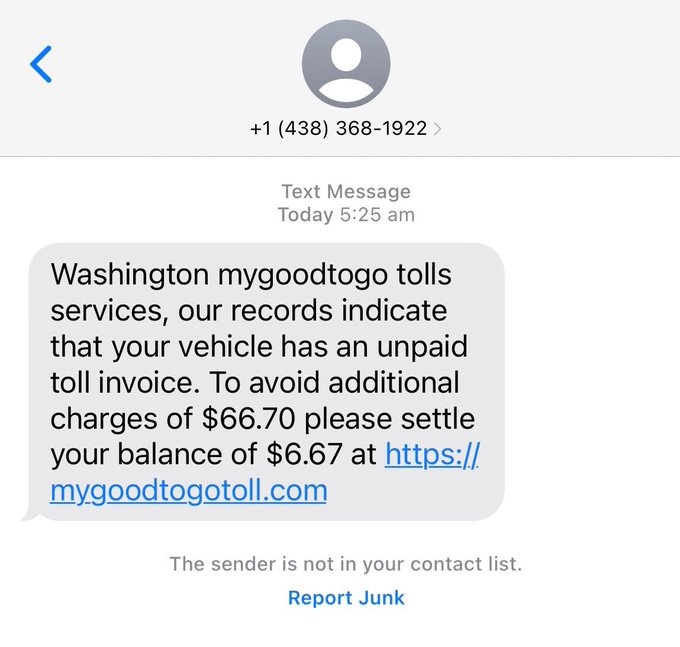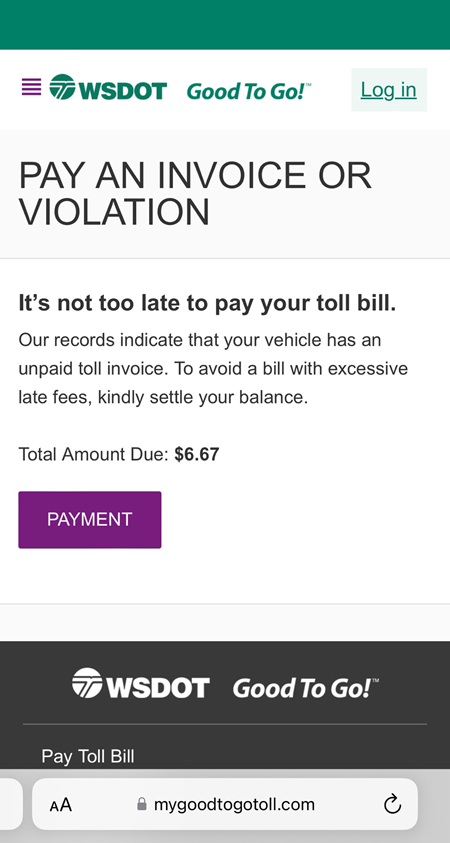Good To Go!, Washington State’s electronic toll collection system designed for a seamless and convenient driving experience, has unfortunately become the target of a scam campaign. Unsuspecting users are receiving text messages that appear to be from Good To Go!, alerting them to unpaid toll invoices and urging immediate payment to avoid additional fees.
The scam texts often mimic the official Good To Go! communication style and may even include seemingly legitimate details like the amount owed. However, there are several red flags that users can look out for. The messages often contain links to websites that closely resemble the official Good To Go! site but have slight variations in the URL, such as “mygoodtogotoll.com” instead of the correct “mygoodtogo.com.” Below is an example shared on X.

The messages may use urgent language, pressuring users to pay immediately to avoid penalties. Some messages have been reported to use unusual phrasing like “kindly settle your balance” (as seen below) or grammatical errors that are not typical of official Good To Go! communications. In some cases, web browsers may flag the linked websites as dangerous or suspicious.

If you receive a text message claiming to be from Good To Go! about an unpaid toll, it is crucial to exercise caution and verify its authenticity before taking any action. Avoid clicking on any links in the text message, as they may lead to fraudulent websites designed to steal your personal and financial information.
Instead of using the link provided in the text, visit the official Good To Go! website directly by typing the correct URL into your browser or using a trusted search engine. Log into your Good To Go! account to verify if there are any outstanding toll invoices. If you believe you have received a scam text message, report it to Good To Go! and your mobile carrier. You can also report it to the Federal Trade Commission (FTC).
Remember, legitimate companies will not ask for sensitive information like your driver’s license number via text or email. Stay vigilant, double-check URLs, and always report suspicious messages. By staying informed and cautious, you can protect yourself from falling victim to these scams.
Always remember that when in doubt, verify the information directly with Good To Go! through official channels.
TechIssuesToday primarily focuses on publishing 'breaking' or 'exclusive' tech news. This means, we are usually the first news website on the whole Internet to highlight the topics we cover daily. So far, our stories have been picked up by many mainstream technology publications like The Verge, Macrumors, Forbes, etc. To know more, head here.


